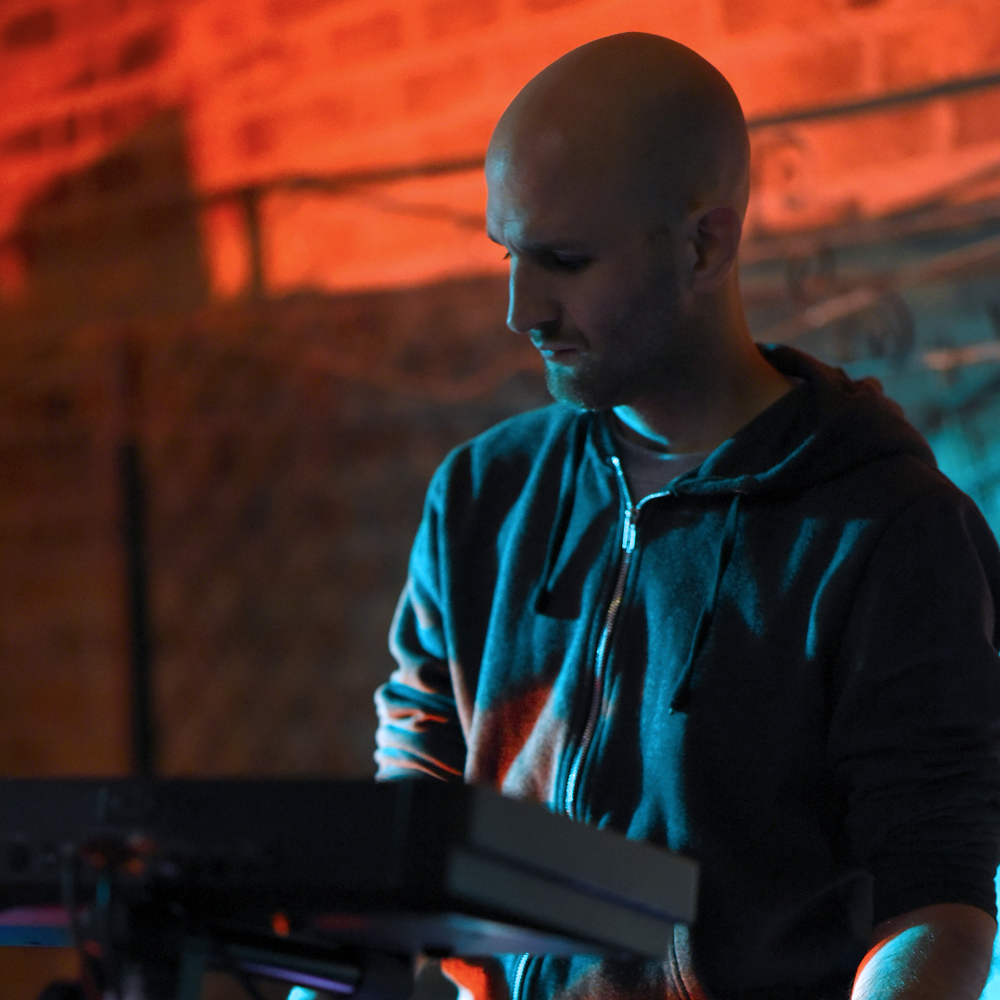5 of the best free guitar amp simulator plugins
Discover the best free guitar VSTs with our pick of no-cost amp and cab sims for guitarists and producers
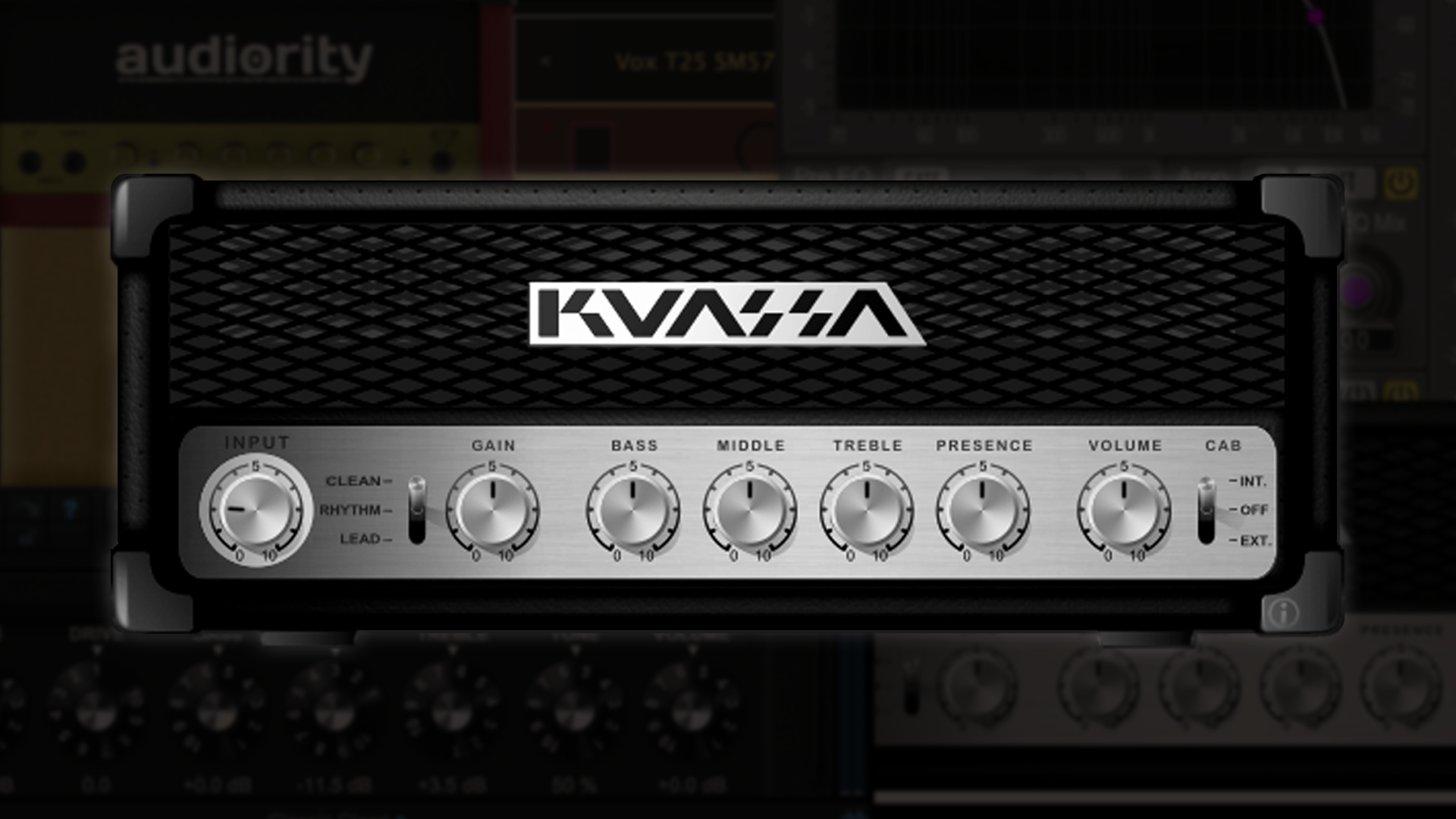
We've explored a wide range of fantastic free plugins lately, from effects bundles and lo-fi tools to a broad spectrum of synthesisers. One very important area we've yet to touch upon concerns the guitarists amongst you, so jack in and tune up, because it’s time to explore the best free guitar amp simulators currently available.
When it comes to guitar amp simulation, we are somewhat spoilt for choice. There are a variety of industry-leading, paid-for guitar VSTs to choose from, such as Amplitube, Guitar Rig, Amplifikation and Amped. There are also numerous, high-quality hardware multi-FX units and amp modellers available from the likes of Boss and Zoom.
These products all offer a wide range of guitar amp simulations that closely mimic the character and spirit of many an iconic amps; from the gentle (almost clean) warmth of a Fender Silverface or Roland JC-120, all the way through to the girth and heft of a fully-cranked Marshall, Mesa Boogie or 5150 stack.
However, there are also a great many freeware options for the budget-conscious producer looking for some realism, warmth and authenticity to their guitar amp simulations. That's why we've spent an afternoon with our old Telecaster, wading through a dozen or so free amp simulators, whittling down five of the best options available. They’re all quite different, so (in no particular order) let’s dive in.
1. Blue Cat's Free Amp
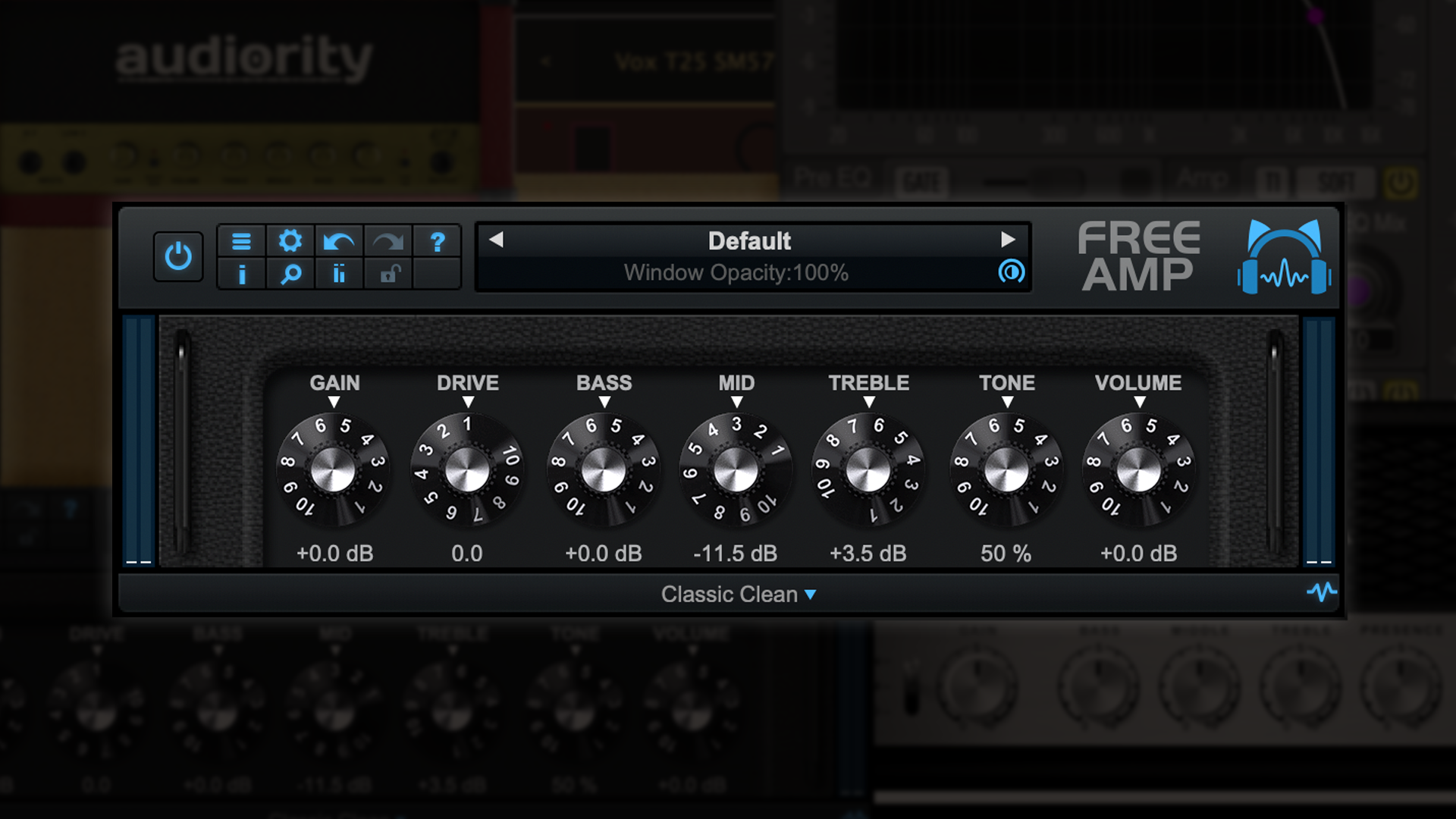
Blue Cat’s Free Amp looks, feels and sounds like something we would expect to pay for. The user interface is very nicely designed with details and embellishments that can often be omitted on freeware, such in/out level-meters and an adjustable window-size (ideal for high resolution screens and/or anyone who spends prolonged periods of time in front of their DAW).
It includes a range of presets, but honestly, if you’re a guitarist, you’ll have no problem making yourself at home, as it works exactly as you’d expect: Gain, Drive, 3-Way EQ, Tone and Volume.
Behind the scenes, this plugin utilises three drive modes/simulations: Classic Clean, Classic Drive and Modern Drive. The display changes with each mode to clue us into what they aim to achieve, namely Fender, Marshall and EVH respectively. The distortion is powered by Blue Cat’s distortion modelling engine found in some of its priced products, and this is key to it sounding like more than 'just a freebie'.
It’s warm! Seriously warm! Within seconds of opening the plugin, we had the Classic Clean on the edge of break-up with just a whiff of saturation, exactly how we like our clean tones, and it delivered this with impressive realism.
Get the MusicRadar Newsletter
Want all the hottest music and gear news, reviews, deals, features and more, direct to your inbox? Sign up here.
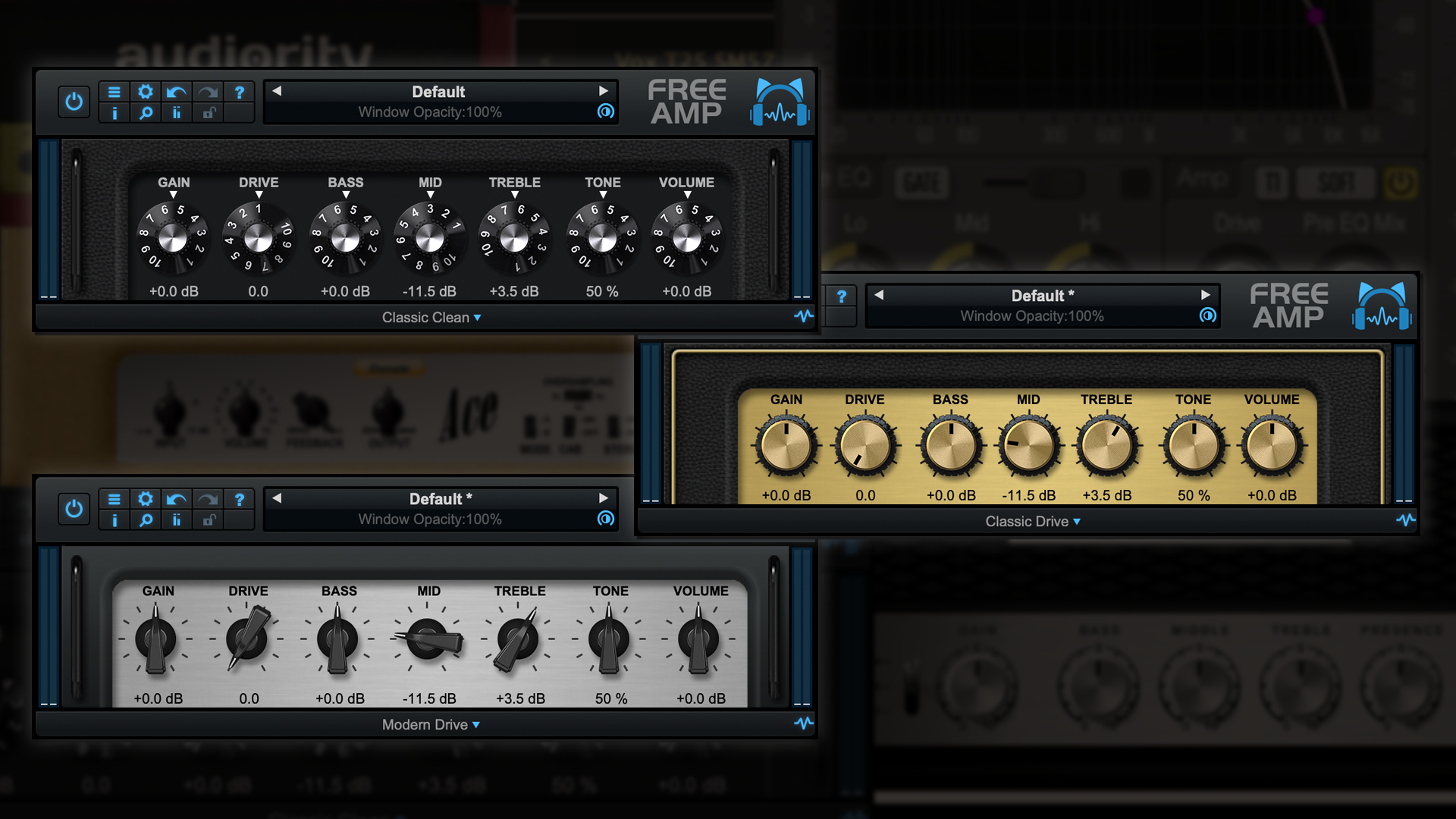
As we move through the modes and crank up the gain, the fuller, thicker distortions are equally as satisfying. They maintain their warmth and dynamic response without becoming harsh or brittle (something that can often plague guitar amp simulation on the beefier tones).
Lastly, an easy-to-miss feature is the small, blue sound wave symbol in the bottom right of the plugin. This is a button that allows you to load impulse responses of speaker cabinets. Therefore, on top of impressive realism in amp tone, you can also emulate with much accuracy any speaker cabinet you have an impulse response of (more on that later!).
2. Kuassa Amplifikation Lite

Amplifikation Lite by Kuassa is a streamlined version of the otherwise priced Amplifikation. Despite being a much simplified version of its feature-laden big brother, what it does, it does so brilliantly.
In many respects it’s structurally very similar to Blue Cat's Free Amp, with Gain, 3-Way EQ, Presence and Volume dials, as well as three operating modes: Clean, Rhythm and Lead. Also like Blue Cat's Free Amp, you can load in speaker cabinet impulse responses.
Tonally, however, it’s a very different animal to the Blue Cat. The Clean channel is very clean. I struggled to get any saturation even with the gain fully cranked (but that’s no bad thing).
The Rhythm channel however is very driven and arguably a little too hot for your average rhythm guitar part (but nothing that can’t be rectified by easing off the gain a few degrees). The lead absolutely wails, more so than Blue Cat's Free Amp, but much like Blue Cat, the distortion is warm and rewarding, never harsh or brittle.
3. Shattered Glass Audio Ace
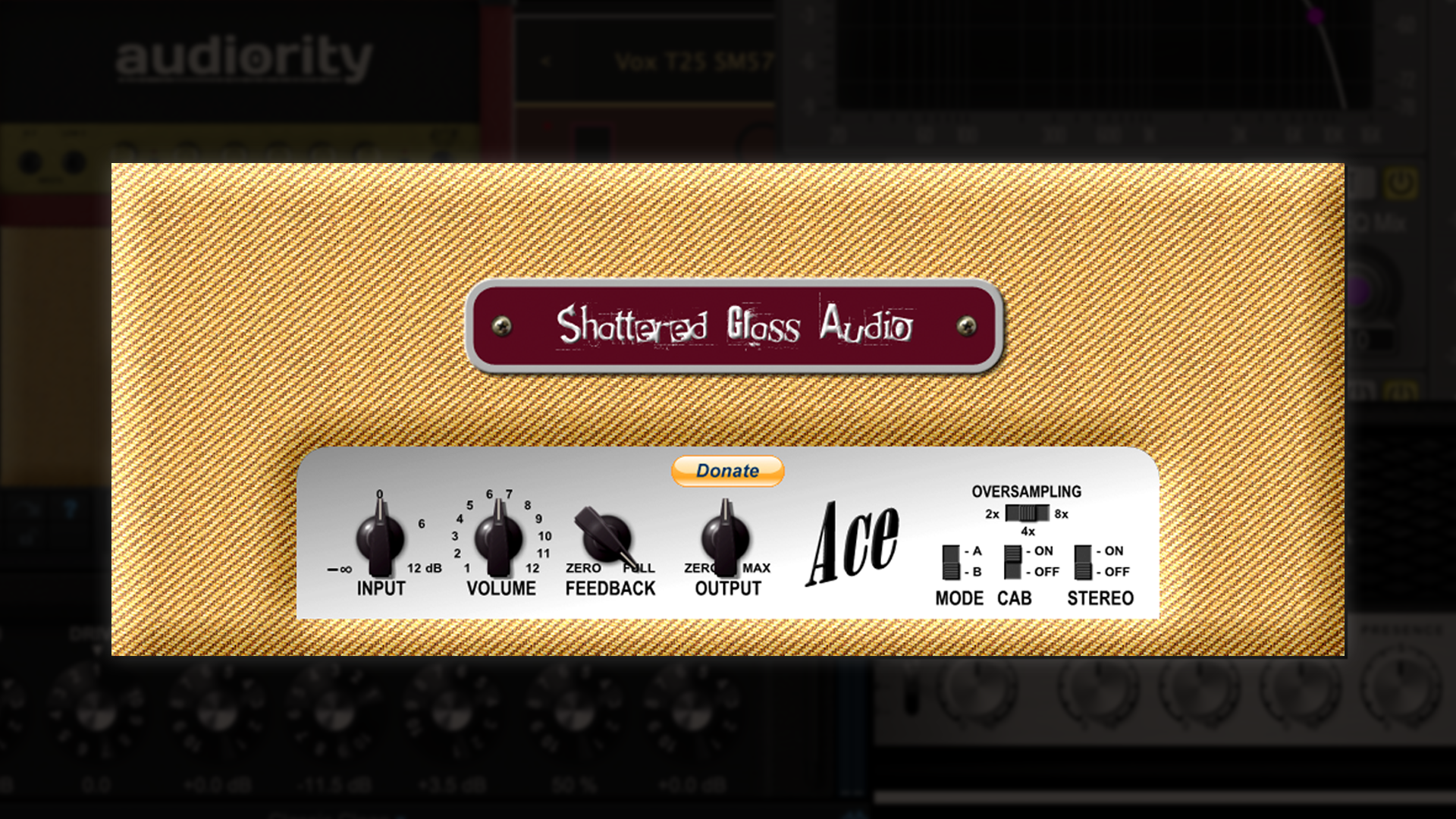
When considering the history of guitar amplification it’s difficult to overstate the significance of Fender’s Tweed series of amps from the late 1940s to late 1960s, and Ace by Shattered Glass Audio is a great way to bring a little tweed into your production arsenal.
If the above-mentioned amp simulators were lessons in less-is-more, this Fender 5E1 amp emulator is an absolute masterclass! Like the amp it seeks to emulate, it simply has a volume control at its core, and it doesn’t sound any less fantastic for its simplicity.
There are some modernisations and luxuries such as turning the speaker cab simulation on/off, increasing the oversampling, and switching to a stereo output signal (which creates a really inviting roominess to the tone).
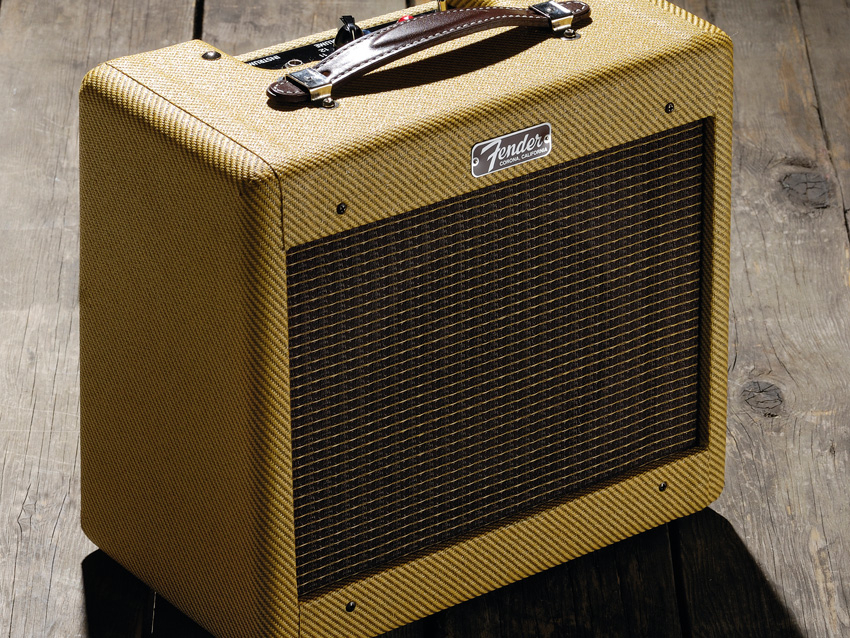
There’s also an option to lower the headroom, thus inducing distortion at a lower volume level. This is done by lowering the Feedback dial (which at max, is mimicking the original 5E1 amp design).
The reason this is called “feedback” is due to the amp’s design utilising negative feedback within its circuitry (output transformer fed back into cathode resistor at stage 2) to increase the headroom (raising the threshold of when distortion occurs).
Hence, reducing the circuit feedback lowers the threshold for when distortion will occur. This is a very inventive feature that exploits the architecture of the 5E1 (and also says a lot about how well-researched and knowledgeable the coders at Shattered Glass Audio are). For a better understanding of this feature and a full breakdown of how the 5E1 works, there’s a fantastic piece about it on AmpBooks.
The Mode allows you to switch between the original amp’s design and a common modification that people do to their 5E1s, to alter the characteristic of the distortion. It’s a subtle change in tone, but nevertheless provides us with two different distortion palettes.
4. Voxengo Boogex
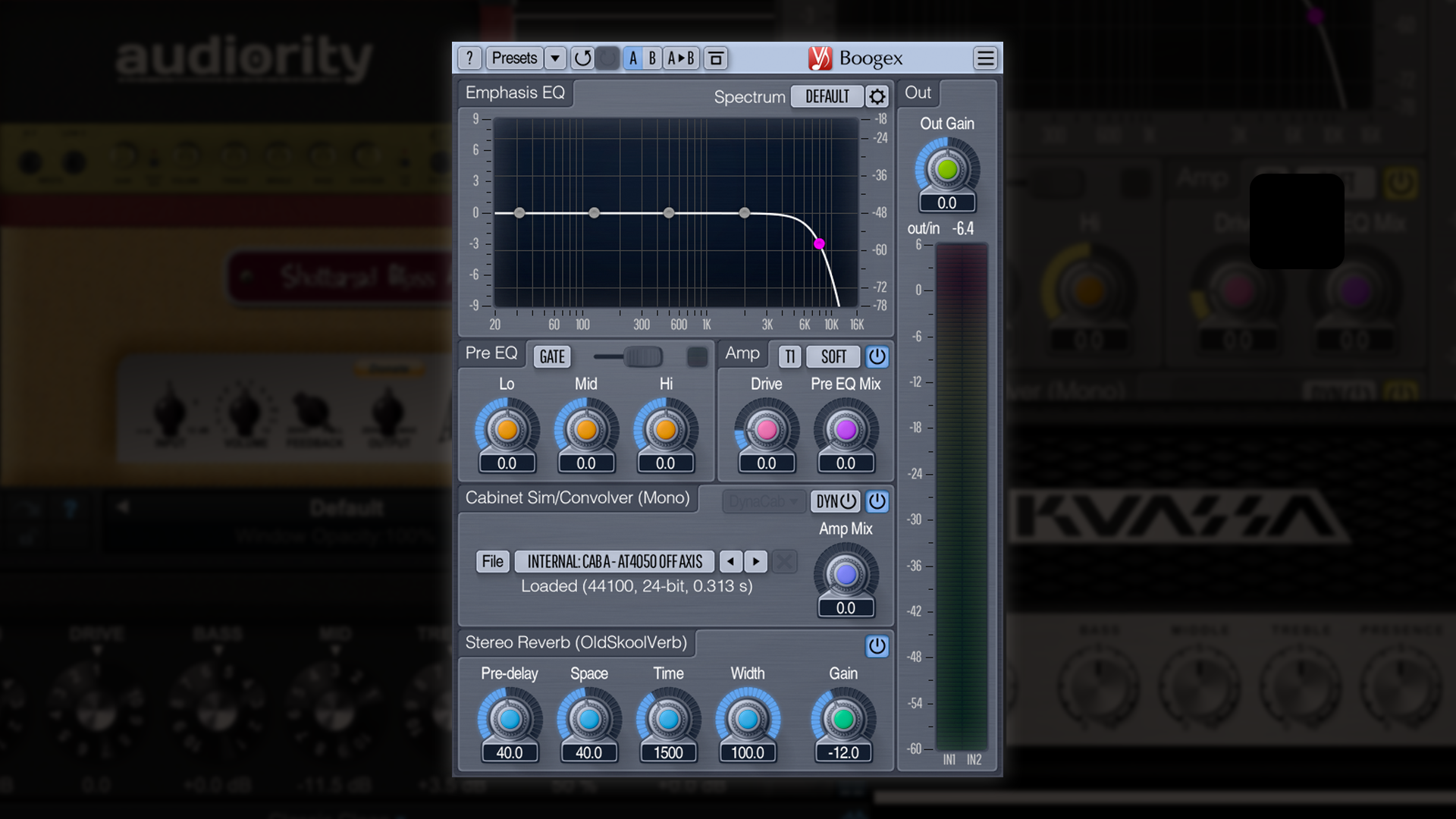
A world away from the sublimely simple Ace, Voxengo's Boogex is arguably the most comprehensive plugin in this list, although you could be forgiven for not realising that it’s a guitar amp simulator (to me at least, it looks like an old Pro Tools signal processor of some sort - thankfully there are several colour palette swaps you can select in the plugin’s settings).
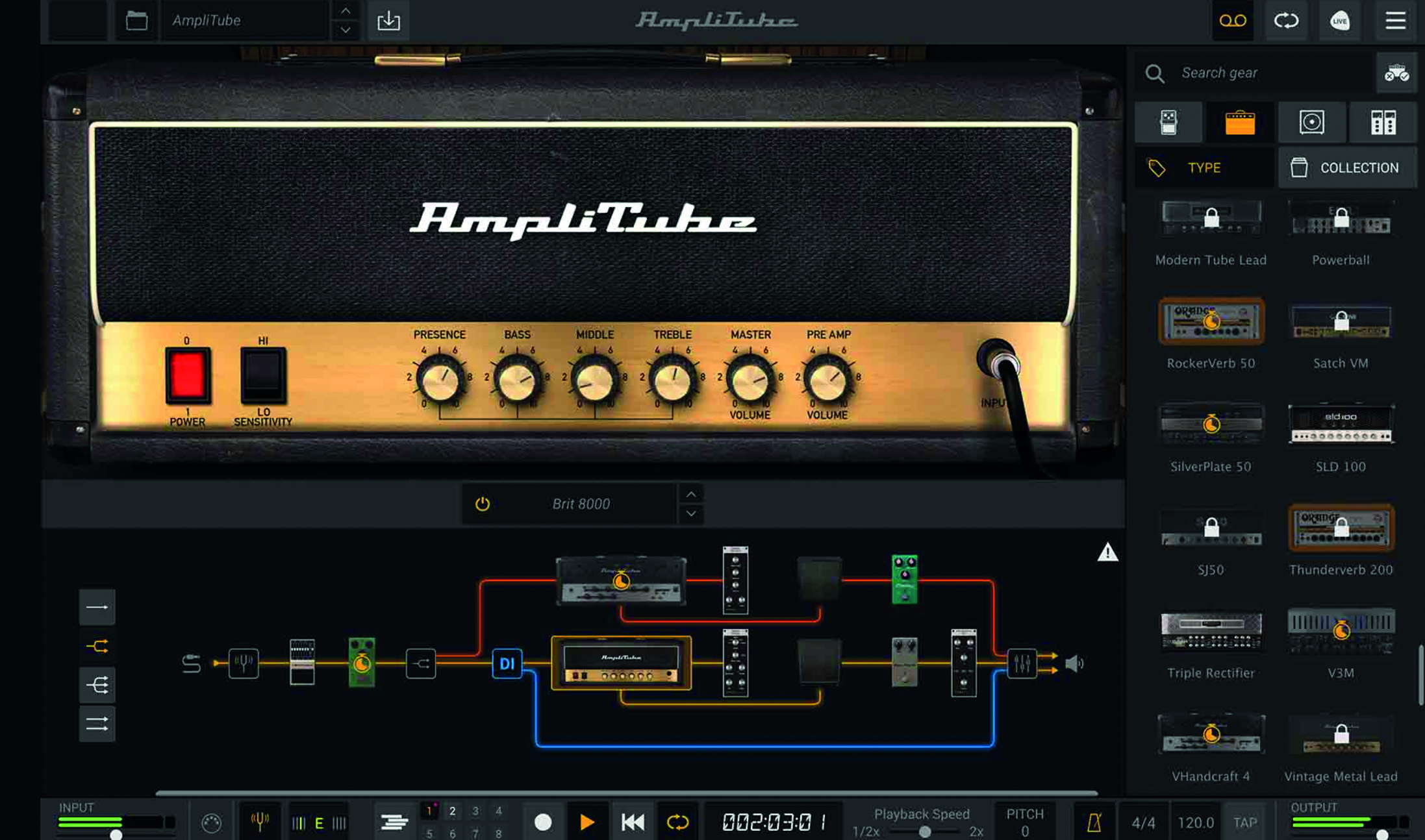
Best guitar VSTs 2023: guitar plugins and software to supercharge your guitar recordings
It incorporates the usual things you’d expect, such as a Lo, Mid, Hi EQ, several amp models, cabinet impulse response support (with many pre-loaded). It also has some nice touches, such as a noise gate and the ability to mix between the source input and Lo, Mid, Hi EQ. Voxengo have even integrated their OldSchoolVerb into the signal chain and it’s very complimentary; present, yet soft and unintrusive.
Perhaps what impresses us most about this plugin is what sits atop of the amp section. The 3-band parametric Emphasis EQ (with HPF and LPF) is not a normal equaliser, but rather it’s tied to only the distortion simulation itself (i.e. the amp’s saturation - not the pre-amp or post-amp audio signal).
For example, if you want your distortion to sparkle a little more, you can dial that brightness in on the Emphasis EQ, without having to modify the overall Lo, Mid, Hi EQ (which is a tool more designed for tonal broad-strokes).
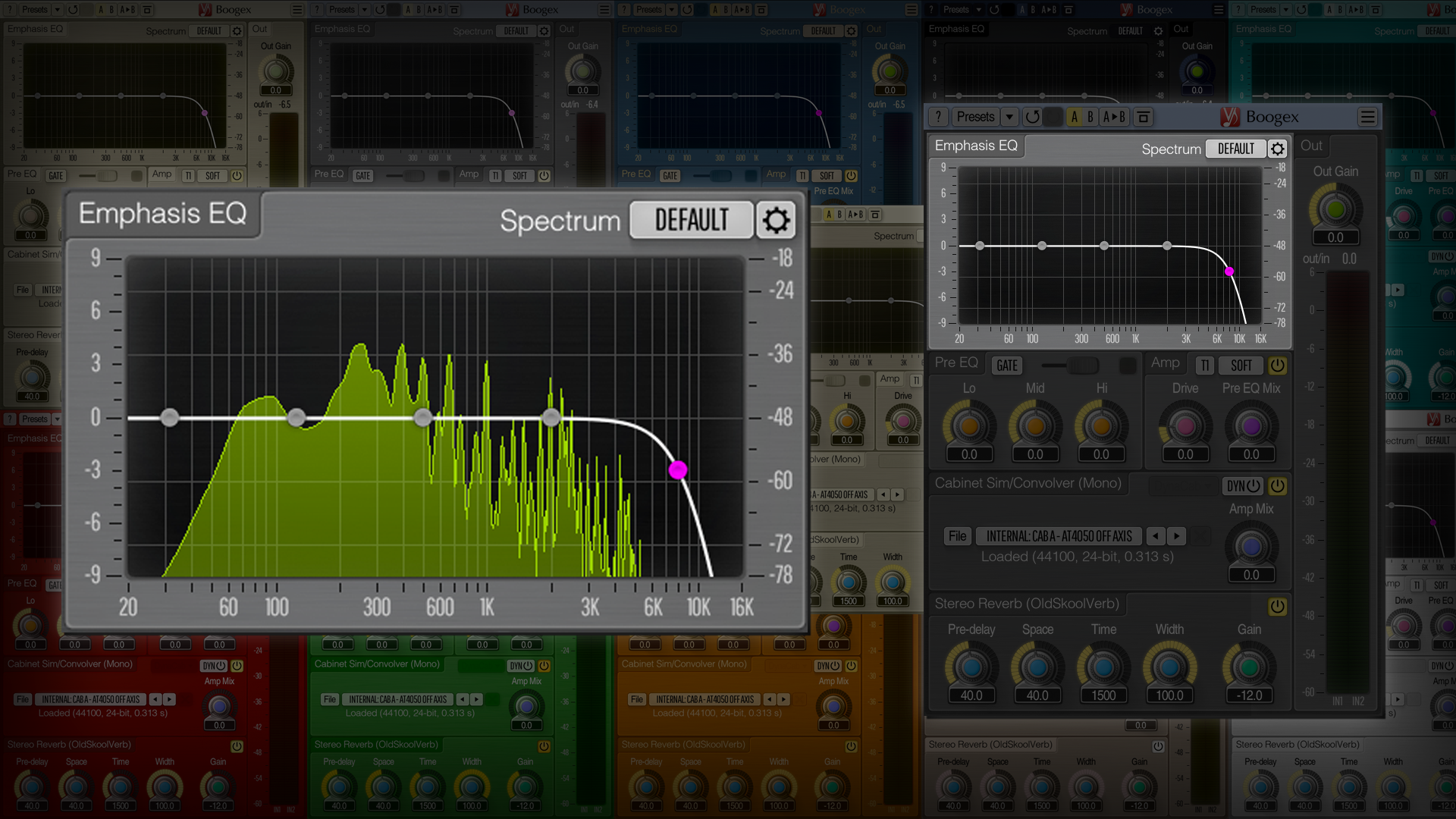
The Emphasis EQ allows you to shape, taper and tune (at the source) a distortion/saturation to perfectly suit your guitar’s pickups and/or the piece of music you’re working on (as opposed to spending ages in post-production hacking away with EQs and multi-band compressors to get your amp to sound right in the mix). Stunning versatility for a free plugin.
Lastly, you can turn most of the features off and simply use this plugin as a host for impulse responses, be it guitar cabinets, or anything! A very powerful and versatile piece of freeware.
5. Audiority L12X Solid State Amplifier
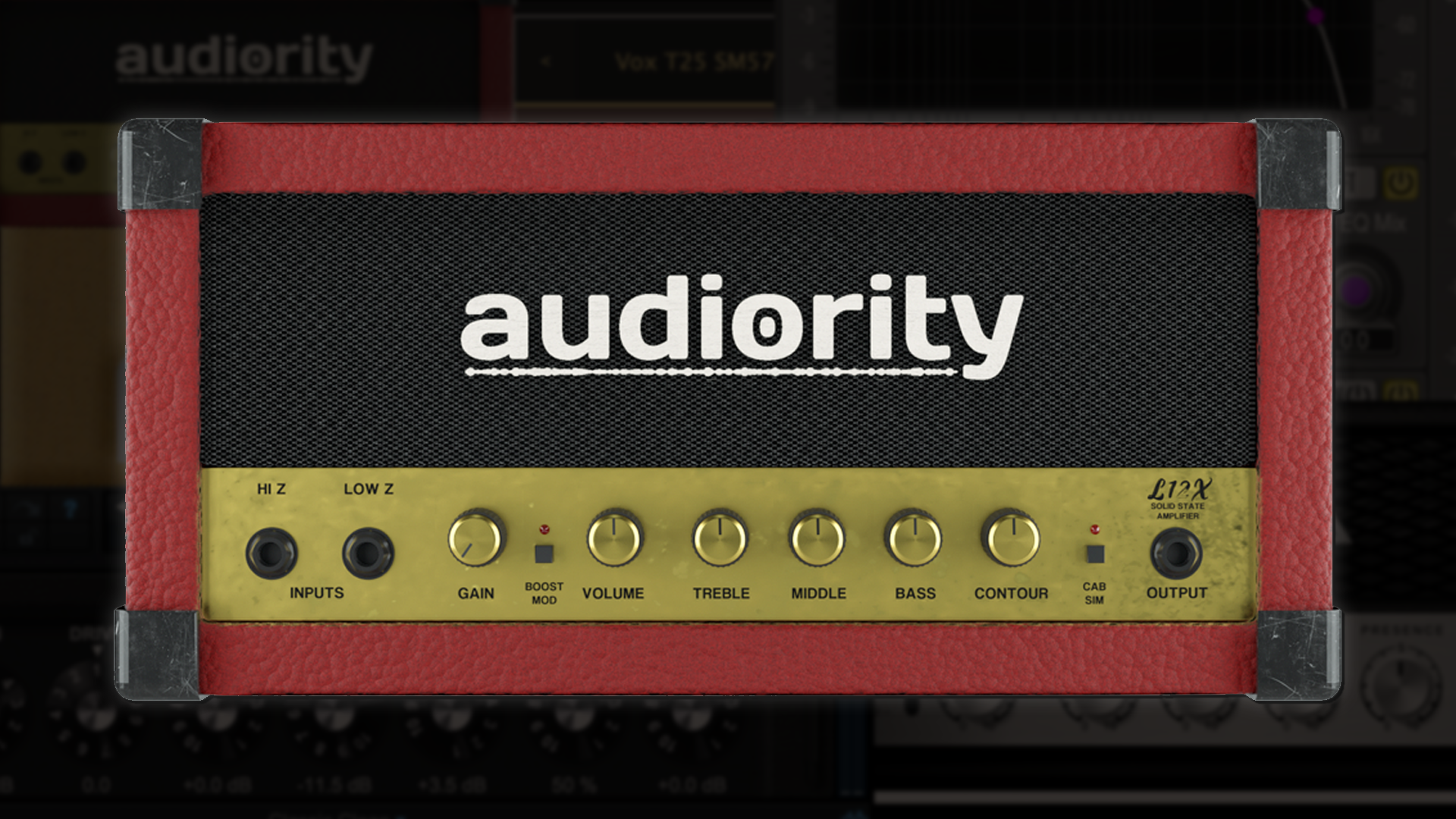
Our fifth and final amp selection is motivated by a little nostalgia and sentimentality for the simple and inexpensive solid-state practice amps we used to play on as kids.
When starting out, most guitarists (ourselves included) begin their journey with a little solid-state (as opposed to vacuum tube) practice amp of some description (whilst daydreaming about Fender Deluxe Reverbs and Marshall JCM2000s). These humble, little practice amps were typically inexpensive, and not particularly great.
However, that’s not to say that with the right engineering solid-state amps can’t sound fantastic, and in fact there were some that stamped their mark on the guitar scene very firmly in the 1980s and 1990s.
One such iconic solid-state amplifier was the Marshall Lead 12. Thanks to its fantastic sound and fairly ubiquitous nature in the late 80s and 90s (when Lead 12s could be found in bedrooms, schools and rehearsal rooms far and wide) it’s become something of a cult icon today, still maintaining a fanbase while being traded on the secondhand market in 2023. Moreover, it’s also now available in emulated format for your DAW thanks to Audiority’s L12X.
As per the original amp, it has a straightforward and easy-to-use layout, and like others in this list, a few tweaks and options made possible by the digital domain. Audiority have added a contour dial to allow for a more scooped tone, an additional boost switch (for even more gain), and a cab simulator.
This amp sounds fantastic and we can imagine it working well for styles such as indie rock and pop. It also has a strangely homely and nostalgic quality for anyone who grew up learning guitar in the 1990s and/or played through budget Marshall practice amps in their youth.
Let's get convoluted
Several of the plugins mentioned above utilise impulse responses of different guitar amps and/or speaker cabinets to “convolute” (replicate as best as possible) their sonic characteristics. You might be more familiar with this principle in relation to reverbs, as convolution reverbs (which are commonplace nowadays) use impulse responses of actual spaces to recreate similar sounding acoustic environments (virtually).
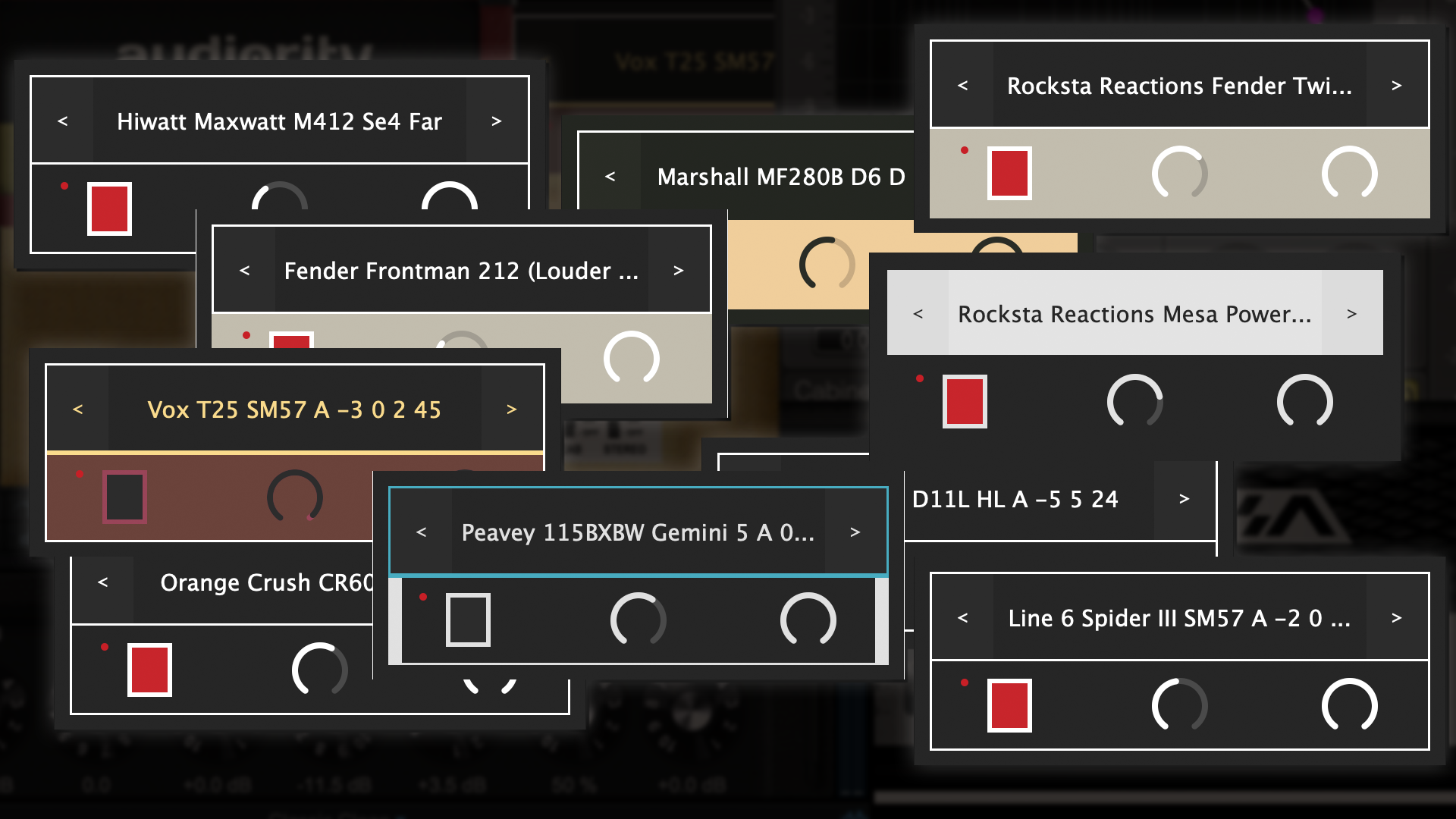
For those of us looking to make music on a budget, there are thankfully some people who prove that not all heroes wear capes, by creating impulse responses of a great many guitar amps and cabinets, using a wide variety of microphones, and uploading them to the internet for anyone to use, free of charge.
You can find enormous resources of guitar amp impulse responses here and guitar speaker cabinet impulse responses here. Lastly, if you want to sidestep all of the amp simulation discussed above and just dive right in to utilising impulse response players, then check out AnyAmpIR by GAS Therapy.
As the options we've detailed above are free, there’s no need to pick one over any of the others - we'd strongly recommend grabbing all of them and giving them a spin. Furthermore, none of them are restricted to a specific genre or style of playing, so all the more reason to install them.
It’s also worth noting that in the modern world of DAW production, guitar amp simulators are good for much more than just guitar! They’re very effective tools for adding warmth and saturation to just about anything (either a plugin on the source channel, or in parallel-processing for a little wet/dry action).
We periodically find ourselves using guitar amp sims on things like vocals and drums - they also sound great on electric keyboards like Rhodes, Wurly and Clavs.
Sometimes keeping things clean and just utilising the cab simulation can also be a really helpful way of adding realism to otherwise sterile MIDI instruments. But whatever you decide to use your guitar amp simulation for, make sure to have fun doing it.


“OSC” Steve is a composer, producer and educator with a background in piano, synthesisers and sound-engineering. He is an established, independent artist in the Synthwave and Retrowave music scenes, and has composed for several independent video-games including Nintendo Switch™ titles.
“The included sample content is not only unique but sonically amazing, as it always was”: Spitfire Audio BBC Radiophonic Workshop review
“We were able to fire up a bass sound that was indistinguishable from the flavour of New Order’s Blue Monday in seconds”: EastWest Sounds Iconic review
